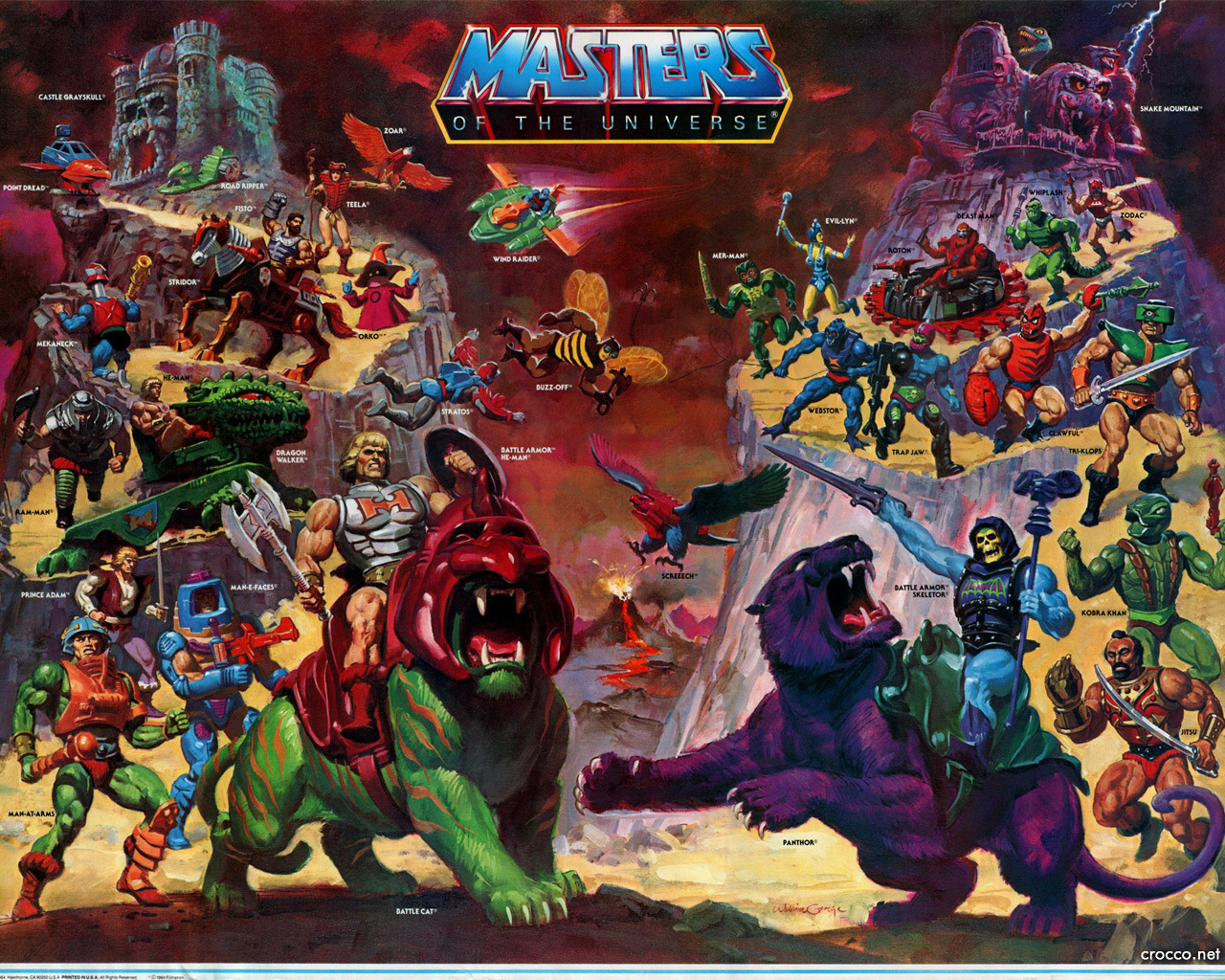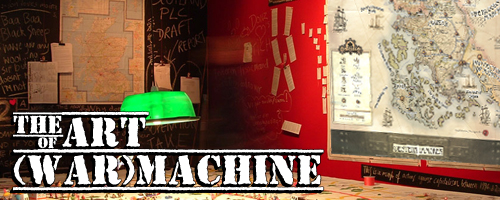Hi folks. I’m new to the blog here, but some readers might remember some of my articles on Lost Hemisphere (or most likely not, but I need to milk that internet fame for all it’s worth). I previously wrote articles on the rules of Warmachine & Hordes, analyzed errata documents, etc. but at the moment there isn’t much to write about in that regard. So, as an avid Warmachine and Hordes player, I’m going to write about something near and dear to me: tournaments.
I love Privateer Press’ games because of the high level of competition and mental challenge that it provides, and you’d be hard-pressed to find that in greater amounts than at a tournament. Most people’s tournament experience will be from their local game store, but there’s also the option of travelling to other stores and going to conventions, both of which I’d recommend if you’d like to grow as a player (but I’ll go into that at a later time). Privateer Press has a rather extensive Organized Play section on their web site, but the main four formats that tournaments will fall under are Steamroller, Hardcore, Masters, and Iron Gauntlet. I know a lot of players out there are new to the game or haven’t done much gaming outside of a casual game with friends, so I’m going to attempt to make a tournament primer for y’all.
Steamroller

Not quite like this.
This is the normal format for tournaments, whether they’re being run at a local club or at a big-name convention like Lock & Load or Templecon. It’s the most malleable of the tournament formats, allowing the organizer to tweak things to their liking. By default though, there are a few things about playing in Steamroller that are different from playing in a pickup game at the local store:
- Pre-made lists – When you sign up for the tournament, you submit your lists to the tournament organizer. Those are the lists that you will be playing. There’s no option to tailor your list to your opponent (i.e. your opponent is playing Legion so you bring Venethrax out of your bag), although a ‘sideboard’ option known as Specialists allows a minimal version of this, letting you swap out a portion of your army for alternate models. As such it’s usually a good idea to make sure your lists are broadly effective, rather than zeroing in on specific factions and casters.
- Character restrictions – All factions have powerhouse models, whether solos, warjacks/warbeasts, or units, and some of them are unique Character models. The normal “Character” rule prevents multiples of the same character from being included in the same army, but Steamroller takes it a step further: if a character is in one of your lists, it can’t be present in any others. For instance, in your Khador army there is a fantastic unit called the Great Bears of Gallowswood. If they’re present in your Kommandant Irusk list, they can’t also be included in your Butcher list. Separate versions of a character (i.e. Eiryss, Mage Hunter of Ios and Eiryss, Angel of Retribution) are treated as different models for this purpose, so you can have each one in a separate list if you so desire.
- Scenarios – By default, games of Warmachine and Hordes end when the opponent’s warlock or warcaster dies. Scenarios add another layer to the game, a set of goals for each player to accomplish (hold this area against the enemy, destroy this objective, etc.), and by being successful at those goals you can win the game as an alternative to caster kill. Scenarios are something that a lot of players, especially newer ones, don’t use, and I personally feel that they’re not getting the full experience of the game. If you haven’t played with scenarios before, you’re going to be in for a rude awakening at a Steamroller tournament, and will lose a lot of games as a result.
- Timed Turns or Death Clock – Since tournaments have to keep to a schedule if everyone wants to get home at a reasonable time, some form of time management has to be in place in the games. There are two different timing styles: the default (timed turns) gives you X amount of time per turn, depending on the size of the game (and if you run out of time to do your turn, too bad); Death Clock uses a chess clock and you’re allotted a total amount of time to use for the game. Both have their advantages and drawbacks, which is a topic for a different day, but for now, I’ll just say that playing on the clock is a wholly different animal than playing at your own pace. If you’re looking to start getting into the tournament scene, the biggest thing that I can suggest is to play as many games as possible on some form of clock. I’d suggest doing this even if your opponent isn’t interested in using a clock themselves. Otherwise, you run the risk of not being able to play at your full potential when it matters and can lose you the game.
Hardcore

I guess I can’t use an image for this word.
This format, like the name suggests, is not for the faint of heart, and appeals more to very competitive players who have a lot of experience with the game. It’s essentially a variant of Steamroller with very specific rules.
- Fully Painted and Based Armies – This can be one of the most daunting parts of Hardcore, at least for me (I’m not a very good painter and am not terribly quick at it). It is quite an awesome sight to see a tournament filled with fully painted armies though.
- Single List – You’re only allowed one list for the whole day, so it’d better be a good one. The format allows for 35 or 50 points (although 50 is by far the more prevalent format), with no Specialists allowed.
- Single Scenario – Unlike other tournaments, there is only one scenario – Death Match. In previous years it was simply Kill Box. The scenario is intended to force engagement in the center of the board, where your caster can get assassinated if you’re not careful.
Fast Paced Turns – You use the suggested Steamroller timed turn limit for the point level below the one you’re playing (so for 50 points you play as though you were using 35 points). This means you only get 7 minutes per turn!
- Medals – Instead of the standard coins or trophies, Hardcore has it’s own medals for prizes: they consist of Mage Hunter, Executioner, Master Craftsman, and Vanquisher. Mage Hunter rewards surgical caster assassinations – the fewer models you destroy besides the warcaster/warlock, the better. Executioner is mutually exclusive of Mage Hunter – the medal is awarded to the player with the highest number of army points killed. Master Craftsman is awarded to the best looking army. Finally, Vanquisher is awarded to the winner of the tournament – the last one left standing undefeated.
Masters

Although awesome, not quite.
This tournament style is for bragging rights, and draws the cream of the crop of Warmachine and Hordes players. It’s typically only done at large conventions, but some larger local tournaments can qualify as a Masters event. There are two ways to get a Masters tournament: either take the top placing players from a series of qualifying tournaments, or run a suitably large enough tournament (32 or more). It’s essentially Steamroller but with a pared down number of scenarios (less of the wonkier ones and more straightforward ones). There are also a required number of lists, which must also be played at least once. To be frank here, if you’re new to tournaments, you’re not going to qualify for a Masters event for a long time, but it’s a nice goal to strive towards. (Way to be a buzzkill, eh?)
Iron Gauntlet

YES.
This is Privateer Press’ newest tournament style – intended to create a global championship. Players from all across the world play in qualifying tournaments and accrue points – the best will be invited to participate in the tournament at Lock & Load, PP’s convention in Seattle, WA. It seems a bit moot to expound on a tournament style that hasn’t happened officially yet, but I know that some people have run events using the format (just not officially) so it bears mentioning at least in passing.
- Cross-faction Lists – Ever wanted to run Haley2 and Harbinger at the same tournament? You’re a bad person, and you should feel bad, but now you can! Players can pair any two lists they want, across Warmachine and Hordes, and they get Specialists to boot. This definitely favours the players with the biggest collections (at least in terms of potential options), but there’s nothing forcing you to play different factions if you wanted to represent your favourite faction the whole time.
- Fully Painted – As per Hardcore, you must have fully painted armies. The thought of having multiple factions’ worth of painting to do gives me nightmares…
What It All Means
Steamroller is obviously the best starting place for someone looking to get started in playing tournaments. They’re the most flexible, there are far less barriers to entry (like travel to a convention or 3 x 50 point character-restricted lists), and are generally less daunting for a newer player, especially since they’re most often run at your local store with your friends. I have yet to participate in a Hardcore tournament, unfortunately (due to my chronic procrastination when it comes to painting) but it’s one of my goals as a player. I’ve played in similarly fast paced tournaments before and although hectic, it’s a lot of fun. I also have yet to play in a Masters tournament although the tournament style appeals to me the most. I enjoy the more streamlined style of scenarios and 3 lists provides both a greater challenge and opens up new options for play.
I obviously can’t comment on Iron Gauntlet too much due to its newness, so I’ll reserve judgment until I’ve seen it in action at Lock & Load this year.
Hopefully this helps you get a clearer picture(and doesn’t scare anyone out of showing up to a tournament – they can be a lot of fun!). I’ll be getting into more detail in later articles. I always appreciate feedback in the comments, especially if you have any topics that you’d like to see covered. Until next time, happy gaming.

